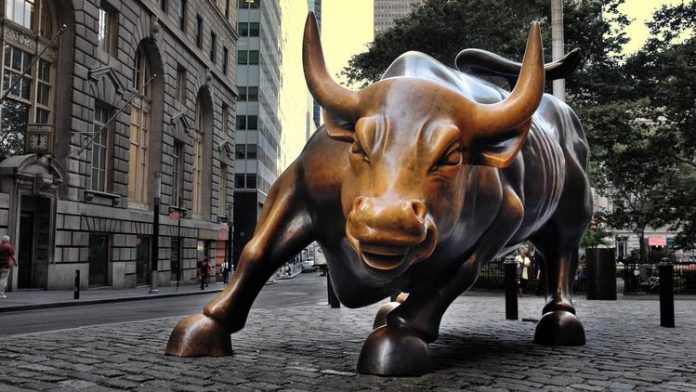Stocks traded higher this morning as the major indexes inched closer to a breakout rally. The Dow, S&P, and Nasdaq Composite all gained modestly through noon.
And though the market isn’t surging today like many bulls had hoped, this morning’s trading session certainly got off to a better start than yesterday’s, when equities opened significantly lower before staging a major intraday recovery.
Mentions of a recession from Philadelphia Fed President Patrick Harker had investors looking forward to an end to the Fed’s hiking cycle. Fed Chairman Jerome Powell soured the mood slightly, however, in his remarks to lawmakers yesterday.
“The ‘unconditional’ notion that the Fed would be prepared to tolerate a recession if that is ultimately required to tame inflation has not been repudiated,” said Evercore ISI vice chairman Krishna Guha.
“But the fact that this was kept in the background not the foreground [on Wednesday] both avoids opening the Fed up to political attack from the left, and confirms that Powell does not want to do anything that might prematurely foreclose on the possibility of a softish landing, even at the cost of leaving the Fed short of Volcker-esque maximum forcefulness on inflation at this time.”
This was reflected by a drop in the 10-year Treasury yield, which continued falling today. The 10-year benchmark rate is now down to 3.00% after touching almost 3.50% on June 14th.
A dip below 3.00% could signal the beginning of a vicious bear market rally amid oversold conditions.
Other analysts, however, are waiting for a shift in economic trends (namely inflation) before giving their clients the “go ahead” to start buying again for the long-term.
“The bounce would certainly be suggestive of any kind of temporary reversal that comes along with very oversold conditions,” said Gratus Capital chief investment officer Todd Jones.
“For us, to think that this would be a more sustained move, we’d have to certainly see an improvement not only in some of the economic data, but I think more specifically, an improvement in inflation.”
Jones is right in that the next rally probably won’t stick. But if the bear market is going to end, we’ll likely need to see much more than an “improvement in inflation.” Inflation will need to drop substantially for the Fed to call off the future hikes.
And that won’t happen without aggressive tightening, a recession, or a combination of both.
Wall Street banks warmed up to that idea over the last week and have started revising their recession estimates in response. UBS raised its recession odds this morning to 69%, citing a recently released poor crop of economic data.
“We are now watching out for any further negative follow-through or whether we simply hit a local peak and some growth momentum in the hard data resumes,” said the investment bank in a note.
Citigroup analysts increased its odds of a recession to 50% while Goldman Sachs raised its own odds to 30% last Monday, up from its prior estimate of 15%.
In reality, however, the odds are probably closer to 99.9%, leaving a 0.1% chance for a sudden, unforeseen source of deflation that has nothing to do with a recession.
But without that, the Fed will almost assuredly hike the US into a recession. And, as evidenced by yesterday’s turnaround, the sooner that one arrives, the better.








